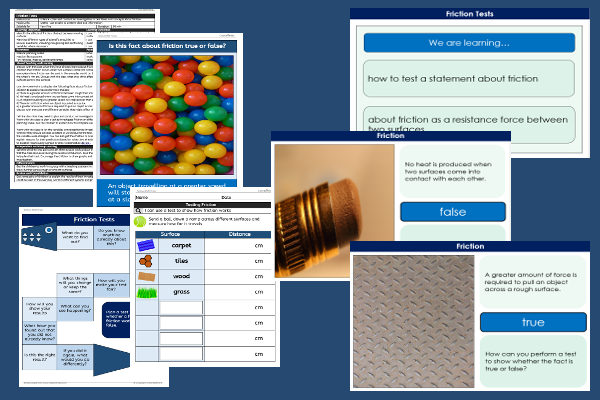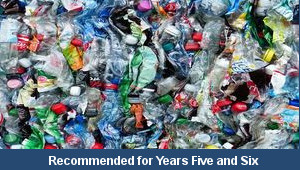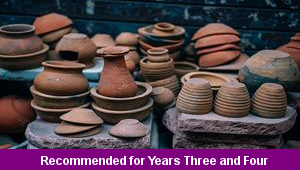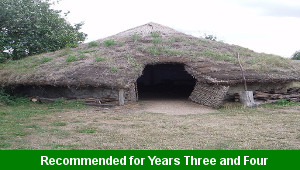Lesson Five – Friction Tests

This science teaching pack for Key Stage Two gets the children to explore how to plan and conduct an investigation to test some different ideas and concepts about how friction works in the world.
The class can select and record measurements and complete graphs to illustrate how friction can work between surface materials at different resistance rates.
Download this teaching pack including a lesson plan, classroom activities and an interactive presentation to explore how to plan and conduct an investigation to test some different ideas and concepts about how friction works in the world
Activities in this teaching pack include display posters to identify true and false statements about friction, a template to plan an investigation to investigate a concept or idea about friction and a worksheet to record results from an investigation about the resistance that can be produced between different surface materials.
The interactive presentation can be used to explore how to conduct an investigation to test different ideas and concepts about how friction works in the world.
This lesson is part of a science scheme of work to get the children to investigate, describe and test the effects of air and water resistance and friction on a range of different objects and materials presenting results using graphs and tables. There are teaching activities for shared learning, differentiated worksheets to support independent learning and interactive presentations to introduce concepts and key skills.
-

Recycling
Research and present some of the benefits and disadvantages that can be produced when recycling different materials at home and in school
-

Viking Pots
Develop and refine a range of different art and design techniques when working with clay to make pots that represent Viking culture and traditions
-

Bronze Age
Research and illustrate how life in Britain developed and changed during the Bronze Age including the growth of communities and trade
-

Future World
Practise using apostrophes correctly in matching sentences to describe some of the things that might be owned by families in the future
